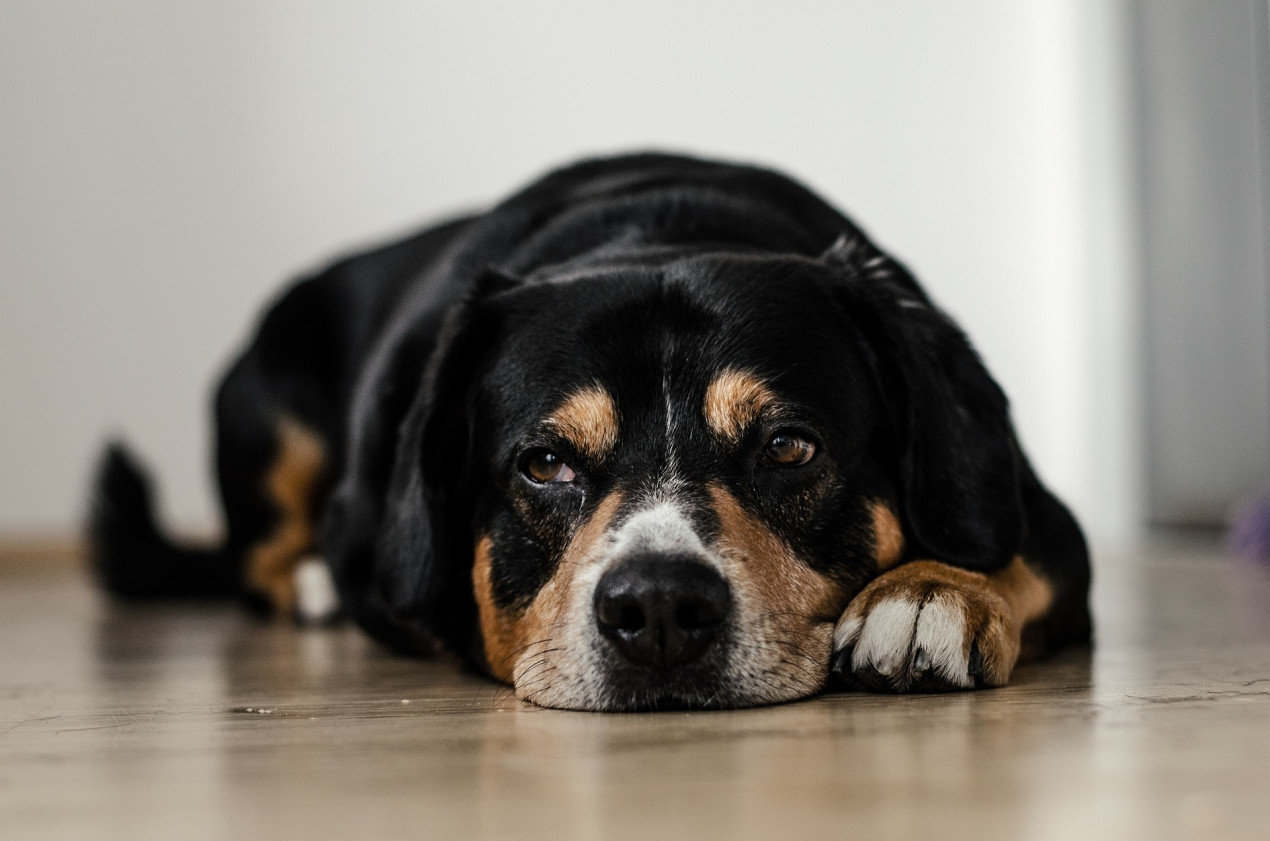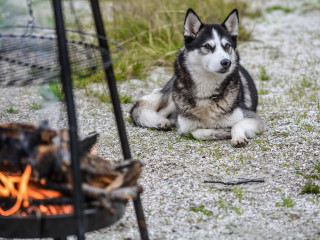
Burns and scalds in dogs
Most of us know how painful burns can be, that’s why we take care to avoid anything that could injure us. Unfortunately, dogs don’t understand these dangers as we do, which puts them at risk of burns from heat, chemicals and electricity.
Burn damage can range from mild, superficial injuries that heal quickly to severe, full-thickness burns that can be life-threatening. Whatever the circumstances, you should always contact a vet for advice as the sooner treatment is started the better.
What should I do if I think my dog has been burnt?
If you suspect your dog has been burnt or scalded then you should contact your local vet or, out of hours, your nearest Vets Now right away. Your vet will be able to advise you on the treatment your dog needs.
Be sure to tell your vet what you think caused the burn and keep the packaging of any substances that could be to blame. They will want as much information as possible to ensure they offer the most appropriate treatment.
In the case of heat burns, either cold water or cold and wet, clean towels should be applied to the burnt area if the wound is fresh. Heat damage to tissues continues even after the heat source has been removed so you should actively cool the affected area with cold water or clean wet towels for at least 10 minutes after the injury occurs.
If the burn happened sometime earlier and the skin is already colder than the surrounding tissue, it can indicate that the skin is compromised and bacteria can easily get into the damaged area, so use clean and preferably sterile dressings.

What can cause burns and scalds in dogs?
The most common causes of burns in dogs include:
- Hot liquids – kettles, saucepans full of hot water, hot drinks, hot oil
- Flames and smoke – flames will damage the skin, but what is often far more dangerous is the heat that is contained in the air. When breathed in, it damages the very delicate linings within the lungs
- Radiators and heated pads – dogs that are unable to move away from the heat source (such as the very young and elderly) are most at risk. Relatively low temperatures can still cause burns if they have a prolonged contact time.
- Electrical injuries – most commonly occur in the home where an electrical flex has been chewed
- Caustic materials – strong acids or alkalis (for example, bleach or other household disinfectants) can cause severe chemical burns
What does a burn look like on a dog?
The signs of burns and scalds in dogs vary depending on the cause. Electrical burn injuries nearly always affect your dog’s mouth, and will show as burns on the lips and across the roof of their mouth. If there are lesions on the back or top of the head then hot liquids are possibly to blame. Caustic substances commonly affect the feet and mouth/tongue (if your dog tries to lick themselves clean) and heat pads and hot water bottles usually affect the tummy or flanks.
You might not be able to see obvious signs of a burn if your dog’s fur is covering it. But one of the first things you might notice is your dog displaying typical signs of pain. Other signs of burns and scalds to look out for include red or inflamed patches of skin, blistering and other changes in the skin like dryness, cracking or oozing liquid. You might also notice changes in the appearance of your dog’s fur or changes in their behaviour. Whatever signs you have identified, if you’re worried that your dog has been burnt it’s always best to contact your vet for advice.
How can I check if my dog has been burnt?
If you’re checking for signs of burns on your dog you should always be aware of your own safety. Be careful if you are touching your dog as they may react aggressively if they are in pain, and never touch the wound itself. Wear protective gloves if there is a risk of coming into contact with corrosive chemicals and if you’re dealing with an electrical burn, make sure the electricity has been turned off before touching your dog.
What do burns do to dogs?
Dogs, like us, are protected from the environment by the skin and specialised cells that line the trachea, oesophagus and stomach, and it is these structures that if damaged can cause great harm to the organs lying underneath. For example, if a lot of skin is burnt away, the body will lose lots of water which will lead to shock, and if there is a great deal of damage then in rare cases this can sadly be fatal.
What is the treatment for dog burns and scalds?
Treatment will depend on the type of burn your dog has suffered and the severity of the damage. For mild burns, pain relief, cleaning, and antibiotics are possible options.
For more severe burns, more aggressive treatment may be required. Your vet will be able to advise you on this once they have examined your dog and performed any necessary tests. Treatment for severe burns may include intravenous fluid therapy as well as pain relief, antibiotics and frequent dressing changes (which your dog may need to be sedated for).
Will a burn heal on its own?
If your dog has been burnt you shouldn’t leave it to heal on its own without seeking veterinary advice. Not only might your dog need pain relief but leaving burns untreated could lead to secondary issues like infection, dehydration and in more severe cases, shock and kidney failure. No matter how mild you think your dog’s burn is, only your vet can confirm what will help it heal.
How long do dog burns take to heal?
The time it takes for a dog’s burns to heal will depend on the type of burn and the severity of the injury. Some mild, superficial burns may heal in a week or so but deeper, more severe burns can take much longer, and secondary conditions like infection can prolong this even more. If, after contacting your vet and following their advice, you are worried that your dog’s burn wound is taking a long time to heal, get in touch with your vet again for advice on the next steps.
What can I put on my dog's burn?
You should never put creams or ointments from your own cupboards on your dog’s burn without consulting a vet – they could do more harm than good. Only your vet will be able to advise you on the best treatment option for your dog’s burn based on the clinical cause and severity of the injury.
What does an infected dog burn look like?
When your dog suffers a burn their skin can become compromised and bacteria can easily enter the damaged area, resulting in infection. If your dog’s burn wound has become infected you might notice swelling, bleeding, pus or an unpleasant smell as well as signs of pain. If you have any reason to believe your dog’s wound has become infected, there is no time to waste as the infection could get progressively worse. Don’t delay in contacting your vet.

